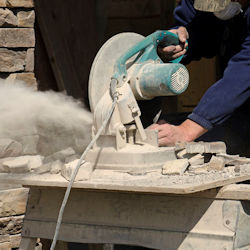Silica Dust Control Strategies
Controlling the exposure to silica in construction can be done by applying engineering controls, administrative actions, and personal protective equipment (PPE), similar to practices in other industries. These prioritized control strategies are called the "Hierarchy of Controls."
- Engineering controls include strategies that eliminate or reduce the hazard (silica dust) itself. Examples include such things as treating material so it does not create dust, replacing silica with another material, isolating, containment, and using ventilation systems.
- Administrative/work practice controls reduce exposure to silica by limiting workers' exposure time, providing showers, and other behavioral controls.
- Personal Protective Equipment (PPE) places a barrier between the worker and the silica dust. This method includes respiratory protection and protective clothing.
Each employee engaged in a task identified on Table 1, must implement the engineering controls, work practices, and respiratory protection specified for the task, unless the employer assesses and limits the exposure of the employee to respirable crystalline silica in accordance with requirements of the OSHA standard.
In this module, we will discuss these control strategies in more detail. It is important to know the best control method for each unique exposure to silica dust because a higher priority control strategy may actually be less effective.
For more information on the Hierarchy of Controls, check out Course 833, Developing a Construction Safety Management System, Module 8, Controlling Worksite Hazards.
Knowledge Check Choose the best answer for the question.
3-1. Which Hierarchy of Control strategy is best for eliminating silica dust?
You forgot to answer the question!

